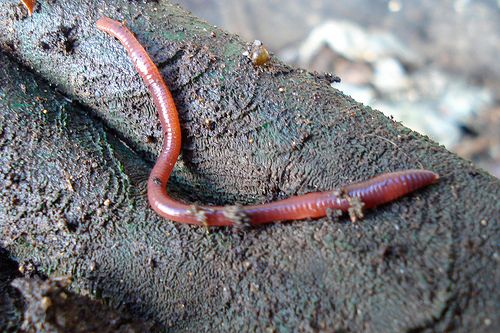Lake Hickory Bait: Providing Reliable Bait for Anglers Everywhere
Wiki Article
Red Wigglers: The Unsung Heroes of Organic Waste Recycling
Red wigglers, or Eisenia fetida, function as vital agents in the organic waste recycling process, transforming thrown out materials right into beneficial vermicompost. Their efficient malfunction of organic issue not just enhances dirt high quality yet also adds to lasting waste management techniques. As the world progressively looks for services to deal with waste build-up and enhance farming productivity, understanding the function of these worms ends up being crucial. What systems permit them to prosper in compost environments, and how can they be properly utilized in both property and business setups? Checking out these inquiries exposes the broader ramifications of vermicomposting in our eco-friendly landscape.What Are Red Wigglers?
The exceptional durability of red wigglers, medically referred to as Eisenia fetida, highlights their important role in organic waste recycling. These tiny, reddish-brown earthworms are normally discovered in breaking down raw material, such as compost heap and manure loads. Lake Hickory Bait. Unlike other earthworm species, red wigglers prosper in nutrient-rich environments and are very efficient at damaging down natural materials, making them important for vermicomposting
(Red Wiggler Express)In addition to their duty in waste decrease, red wigglers add to dirt health and wellness by improving soil framework and aeration through their burrowing tasks (Lake Hickory Bait). Their existence in composting systems not just improves decay rates however also promotes a sustainable method to waste management, highlighting their importance in eco-friendly conservation efforts
Advantages of Composting With Worms
Composting with worms, especially red wigglers, offers many advantages that enhance both waste management and soil health and wellness. Initially, these worms efficiently damage down organic waste, transforming it into nutrient-rich vermicompost that enhances dirt. This process increases decomposition, permitting a much faster recycling of kitchen scraps and other natural products compared to conventional composting approaches.Furthermore, the vermicompost produced by red wigglers is including beneficial microorganisms, which assist enhance dirt structure, oygenation, and moisture retention. This boosts the total health and wellness of plants, promoting energetic growth and increased returns in yards and agricultural setups. The use of worms in composting minimizes the manufacturing of greenhouse gases, such as methane, adding to a more lasting waste management system.

Just How to Beginning Vermicomposting
Establishing a vermicomposting system is a simple procedure that can generate substantial advantages for both waste management and dirt enrichment. To begin, pick an ideal container, such as a plastic container or wooden box, with adequate ventilation holes to ensure proper airflow. The dimensions ought to preferably be around 2 feet by 3 feet, enabling sufficient space for the worms to prosper.Following, prepare bed linen product, which can be composed of shredded newspaper, cardboard, or coconut coir. This bedding should be dampened to create an appropriate environment for the worms. When the bedding is in place, introduce red wigglers (Eisenia fetida) right into the container, generally around one extra pound of worms for each square foot of area.
Adhering to the placement of worms, add natural waste, such as fruit and veggie scraps, coffee grounds, and smashed eggshells. With these actions, you will successfully launch a vermicomposting system that adds to lasting waste monitoring and improves your soil.
Keeping a Healthy And Balanced Worm Bin
(Red Wiggler Express)Maintaining a worm bin growing needs routine interest and like make sure the wellness of the red wigglers and the performance of the composting process. Appropriate maintenance starts with monitoring the moisture levels; the container should be moist yet not soaked. A good guideline is to keep an uniformity comparable to a wrung-out sponge.Delicately blending the bed linens and food scraps every couple of weeks protects against compaction and guarantees that all worms have accessibility to oxygen. Additionally, it is essential to feed the worms appropriately.
Temperature level guideline is one more important facet. Red wigglers flourish in a range of 55 to 77 levels Fahrenheit. If the bin ends up being also warm or cold, the worms may end up being worried - Lake Hickory Bait. Last but not least, occasionally check for indicators of health and wellness, such as worm populace growth and the presence of healthy castings. By vigilantly handling these variables, one can keep a durable and productive worm container.
Influence On Sustainable Living
The effective upkeep of a worm container not only benefits the health of red wigglers but additionally contributes significantly to lasting living practices. By recycling natural waste, such as cooking area scraps and yard particles, red wigglers help divert significant quantities of product from land fills. This reduction in waste not just reduces greenhouse gas exhausts yet also lessens the environmental burden connected with waste management.In addition, the spreadings created by red wigglers function as a nutrient-rich natural plant food, enhancing soil health and advertising plant growth. This all-natural option to chemical fertilizers sustains sustainable farming and horticulture practices, minimizing reliance on synthetic inputs that can hurt ecological communities. Furthermore, worm composting promotes understanding of waste administration, urging people and areas to adopt even more lasting routines.

Final Thought
In summary, red wigglers serve as crucial contributors to organic waste recycling with their efficient decomposition of organic materials. By incorporating vermicomposting into waste monitoring approaches, individuals and areas can dramatically decrease waste while advertising ecological sustainability.Report this wiki page